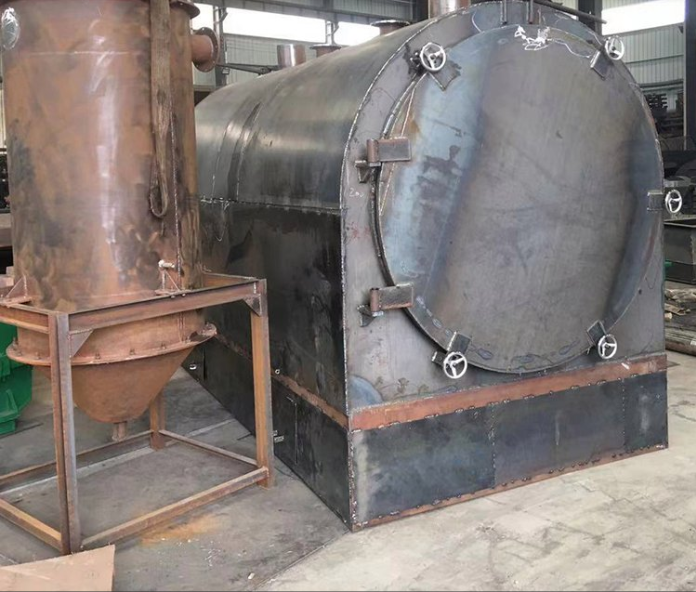The principle and process of a charcoal machine:
The principle of a charcoal machine is simple and easy to understand. It involves filling raw materials such as tree branches, straw, rice straw, peanut shells, tree trunks, cotton straw, tea seed shells, fruit shells, weeds, leaves, etc., which contain biomass fibers that can be used to produce charcoal. After being crushed into a powder within 10mm by a pulverizer, it is dried by a dryer to have a moisture content of less than 12%, and then fed into a rod making machine for high-temperature treatment, After being formed under high pressure (without any additives) and placed in a carbonization furnace for carbonization, the finished machine made charcoal is obtained. The material powder can also be directly carbonized into carbon powder using a continuous carbonization furnace at high temperature.

technological process:
Production process of charcoal machine: The material is crushed, dried, and then formed by a rod forming machine for carbonization treatment. The main equipment includes a crusher, dryer, rod making machine, and carbonization furnace, which are made according to the equipment sequence.
The main equipment includes a rod making machine and a drying machine, which are specialized machinery for manufacturing machine made charcoal. The drying machine can automatically discharge and dry once, with no material leakage at the exhaust port and no spraying at the discharge port. It can be used for production by four rod machines. The automatic temperature control rod making machine can adjust the compactness of the rod at any time, and this technology not only ensures the quality of the rod. Branches, leaves, sawdust, and other agricultural products are used as raw materials, which are crushed, pressurized, and densified to form. They can replace traditional coal, so they are called "straw coal". It is an emerging fuel

 WeChat / WhatsApp
WeChat / WhatsApp
 Online messageIf you have any questions, please leave a message here to tell us, we will contact you in time!
Online messageIf you have any questions, please leave a message here to tell us, we will contact you in time! Products
Products









 Online service
Online service Telephone
Telephone Message
Message